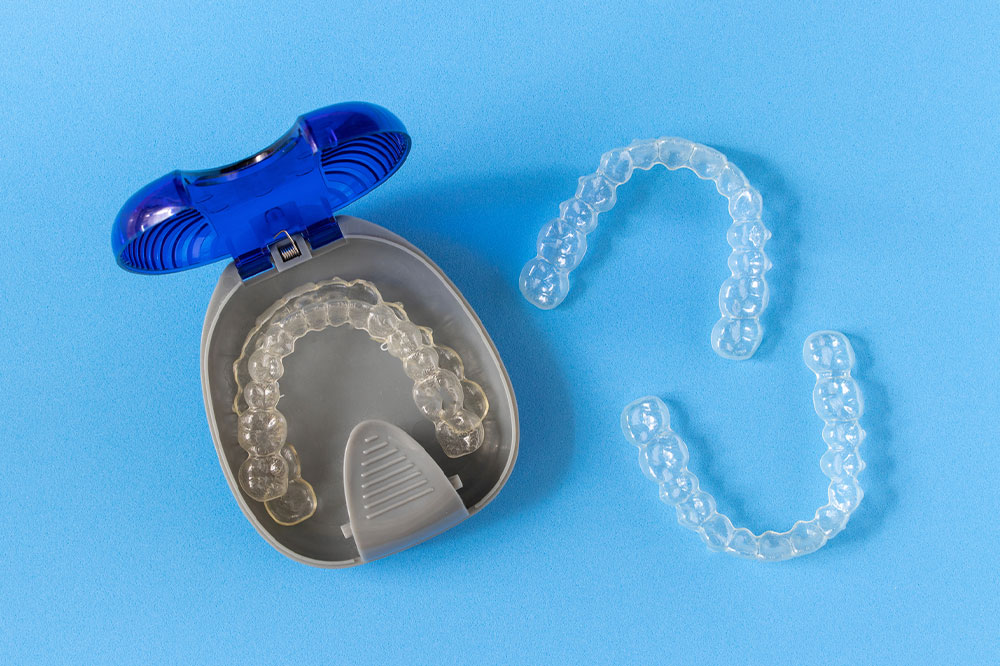9 Benefits of Clear Teeth Aligners for Seniors

Braces for correcting misaligned teeth have been used for centuries. But traditional braces can be cumbersome, painful, and a hassle for children and seniors. Fortunately, advances in dental care have paved the way for orthodontists to suggest clear aligners as a convenient option for older adults and seniors. These aligners are subtle and provide the proper comfort and look for a grown adult. Let’s look at some benefits clear teeth aligners provide:
Maintains oral hygiene
Aligners fix crooked teeth and current the unnatural crowding of molars on the upper and lower jaw that pose many problems with advancing age. For instance, food particles can lodge into these crevices, making them a breeding ground for bacteria that can cause a dental or gum infection. Overcrowded teeth also make brushing, flossing, and maintaining general oral hygiene cumbersome. Seniors will be forced to spend more time and energy just getting their morning routine done correctly. Crooked teeth can also cause pain, so it is better to consider teeth aligners to correct the bite.
Barely visible aligners
One of the most significant benefits of using clear aligners over traditional braces is their ability to be hidden in plain sight. These braces are designed to perfectly fit the upper and lower jaw without affecting the range of motion and jaw movement. It is made from a transparent material that is durable yet barely visible unless someone takes a closer look. So, seniors can comfortably go about their routine wearing clear aligners. It is one of the main selling points for most seniors who are conscious of their appearance.
Improves natural bite
The upper and lower teeth must align perfectly to make it easy for a person to chew food. However, misaligned teeth that result in overcrowding can displace bite and make it difficult to enjoy favorite foods. A misaligned bite also forces seniors to change their eating style and refrain from certain foods due to their texture and consistency. Clear teeth aligners or traditional braces that straighten the teeth back into place can improve bite efficiency.
Lowers risk of wear
The bite deepens with advancing age as seniors have to exert more force to chew and munch on foods. Also, deep bites increase the risk of injury with crowded teeth and force the tooth to wear out prematurely. Wear and tear degrade the enamel and erodes the upper layer of the tooth, increasing the risk of cavities, decay, and bacterial infections. Using teeth aligners can solve this problem and prevent healthy teeth from eroding and wearing out. Aligners also restore normal functioning without inserting surgical crowns and veneers to protect the molars.
Improves appearance
Crooked teeth can make a person feel conscious about their appearance. They tend to hold back from smiling freely for fear of showing misaligned molars. Teeth aligners can help overcome this fear and restore one’s beautiful smile, especially among seniors and the elderly. Also, aligned teeth can fix the proper function of the jaw, improving speech. Seniors who struggled with legibility can again speak clearly with minimal effort. Moreover, clear aligners improve speech problems like lisping, muffled voices, and echo.
Provides enhanced comfort
Crooked teeth can become a real nuisance with advancing age. These molars can grow and move out of place, leaving gaps and even forcefully protruding against other healthy teeth, causing pain and discomfort. If left unchecked, misaligned teeth can also trigger gum problems and increase the risk of infections affecting the molars’ roots. Clear aligners can gradually help the front, midsection, and back teeth to place with minimal pain, restoring proper bite and movement. This will also help seniors protect the remainder of their natural teeth.
No need to change routine
Seniors can enjoy their favorite foods and beverages with clear teeth aligners. There is no need to make any drastic changes to daily nutrition and routine. These products are designed to be minimally invasive and ensure maximum comfort for daily use. It is also very easy to remove and clean these aligners. However, one does not have to fuss unnecessarily about the repeated task making aligners the perfect choice for the elderly who want to restore their beautiful smiles.
Proven results
Teeth aligners have been consistently delivering proven results for managing common dental problems. Today, technology and innovative design have allowed orthodontists to experiment with clear aligners that require no significant implantation or procedure. Orthodontists use the shape of the upper and lower jaw to create a mold and base the design of the clear aligners on this foundation. Once ready, these aligners can be easily affixed and removed at home without affecting the daily routine. It is also easy to clean and maintain clear aligners as opposed to traditional braces. Seniors must only go for periodic appointments to configure the aligner as per the treatment plan. Clear teeth aligners offer the most hassle-free options for seniors who are committed to restoring their smiles.
Affordability
Many insurance providers cover cosmetic dental procedures for seniors and offer additional benefits. Even the cost of teeth aligners has been reduced to ensure everybody can afford dental treatment. Seniors can also avail of easy repayment plans to pay the treatment over equated monthly installments. In addition, all seniors should get proper treatment promptly.
Conclusion
Note that orthodontists will assess the treatment’s efficiency based on the misalignment’s severity. Clear aligners may be better options for some if the teeth have severely shifted out of place. However, if you have always longed for straighter teeth, clear teeth aligners are your best bet. You will see great results with these aligners because they require zero brackets and wires accompanying traditional braces. Besides, clear aligners look more discrete and subtle. You can get these aligners without worrying about the braces’ aesthetics at any age!






